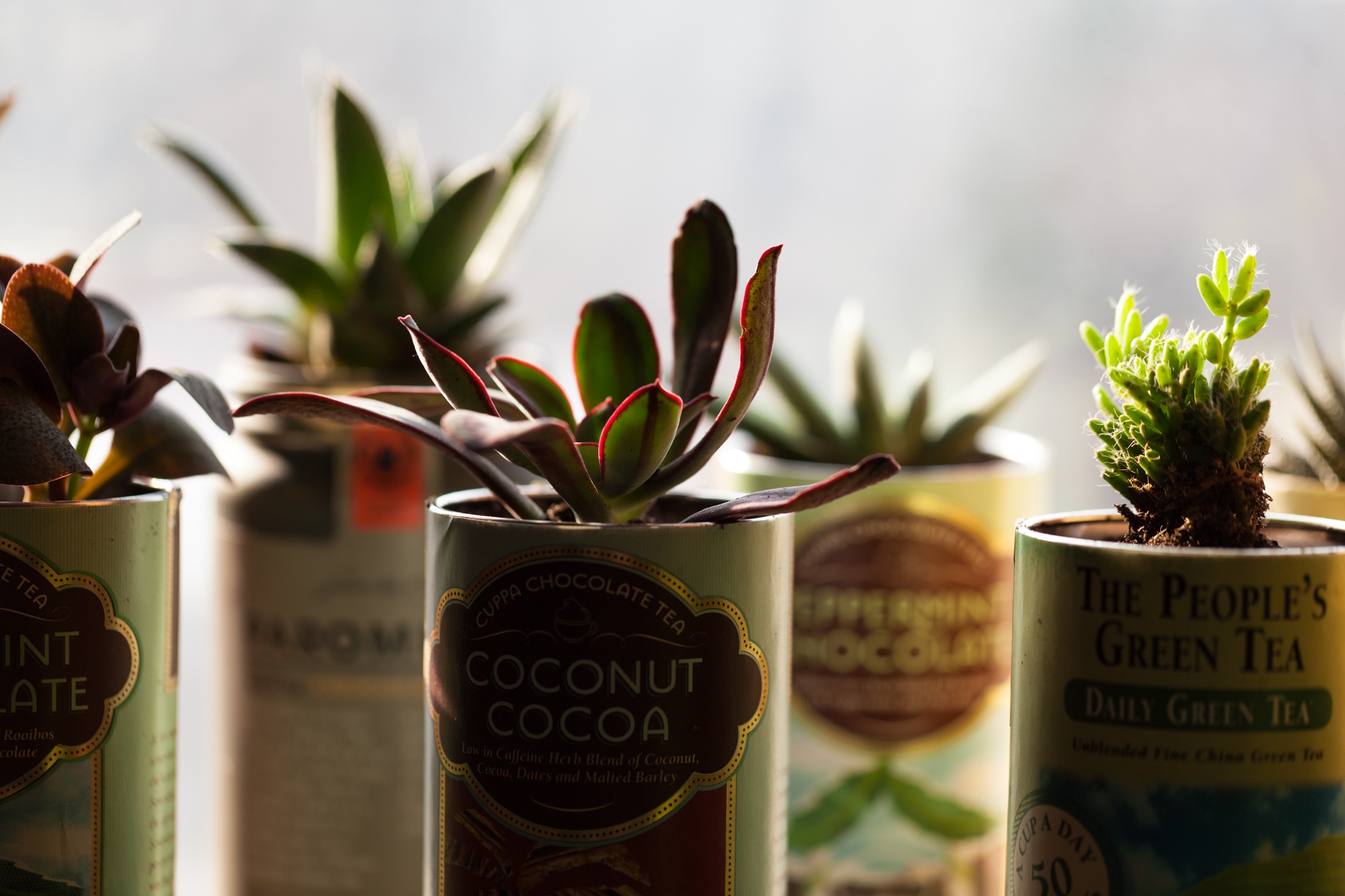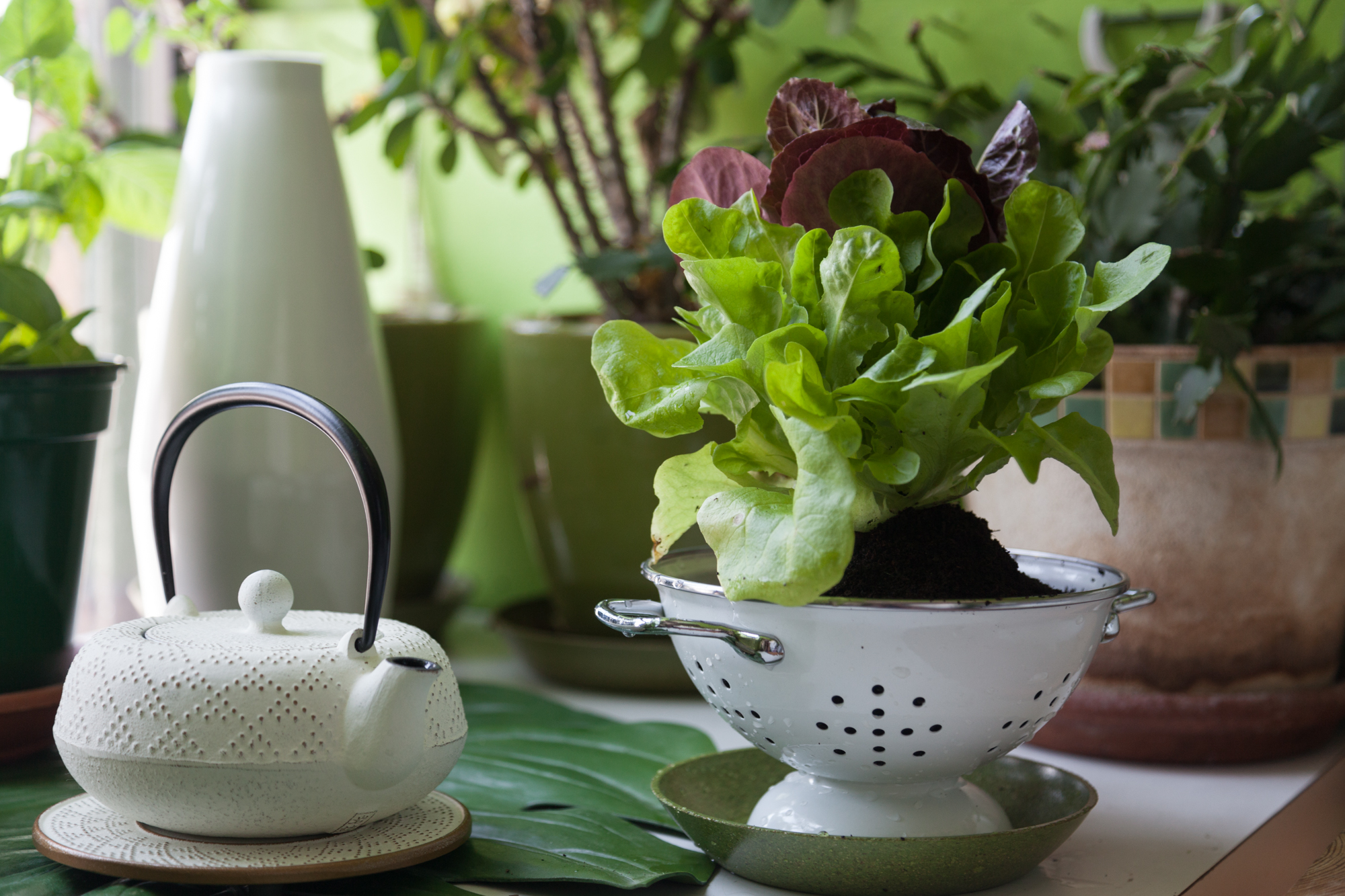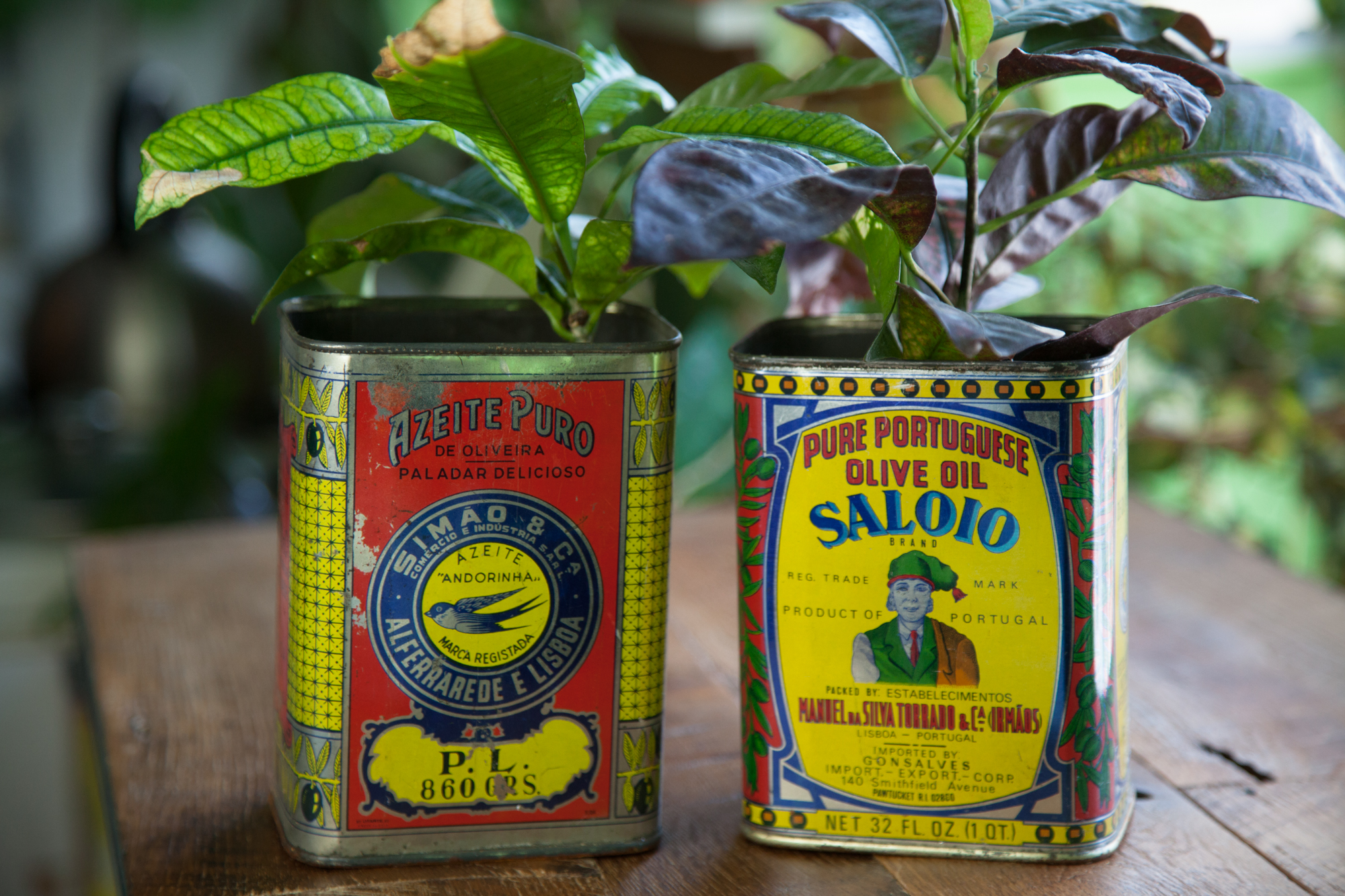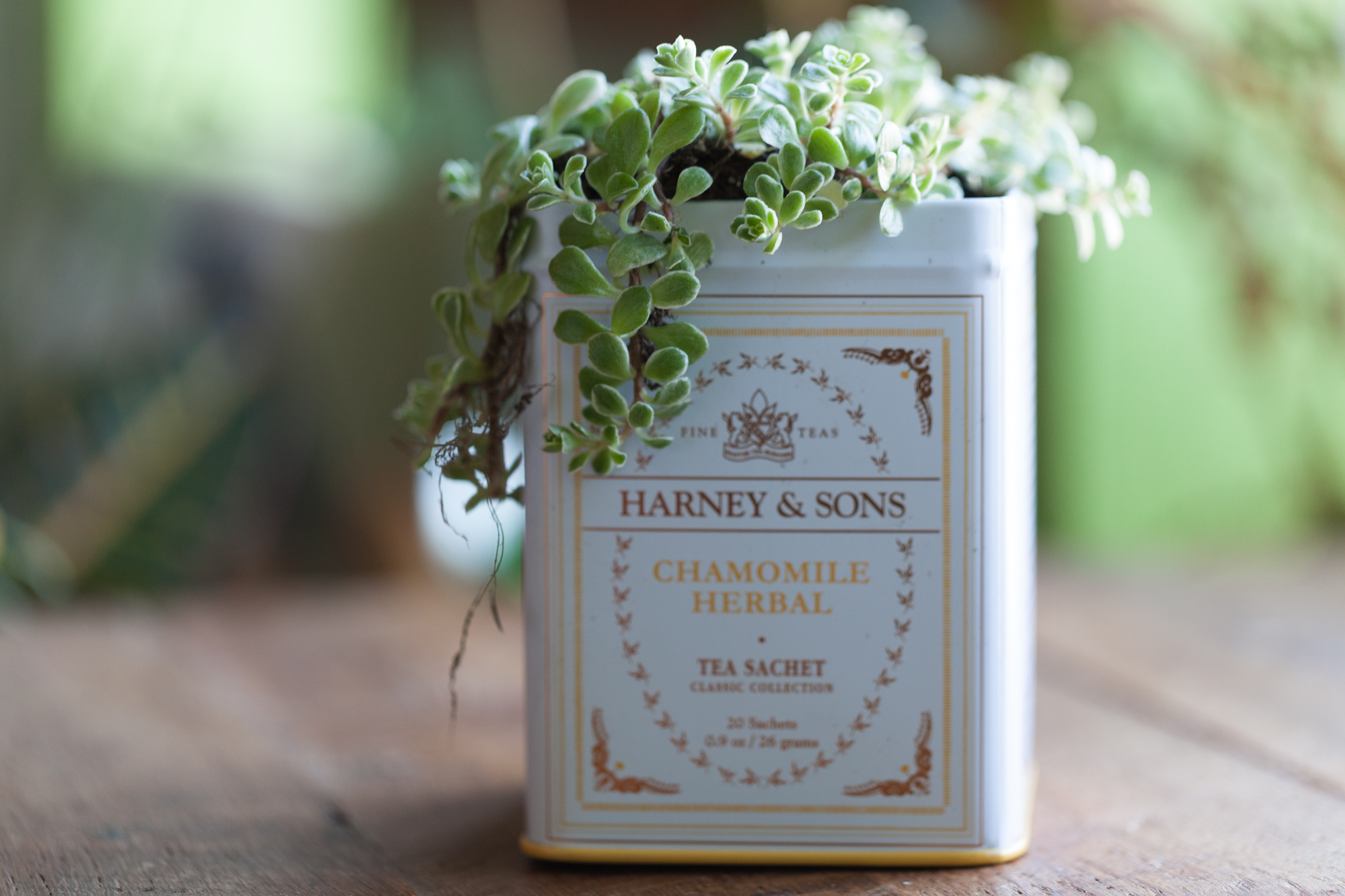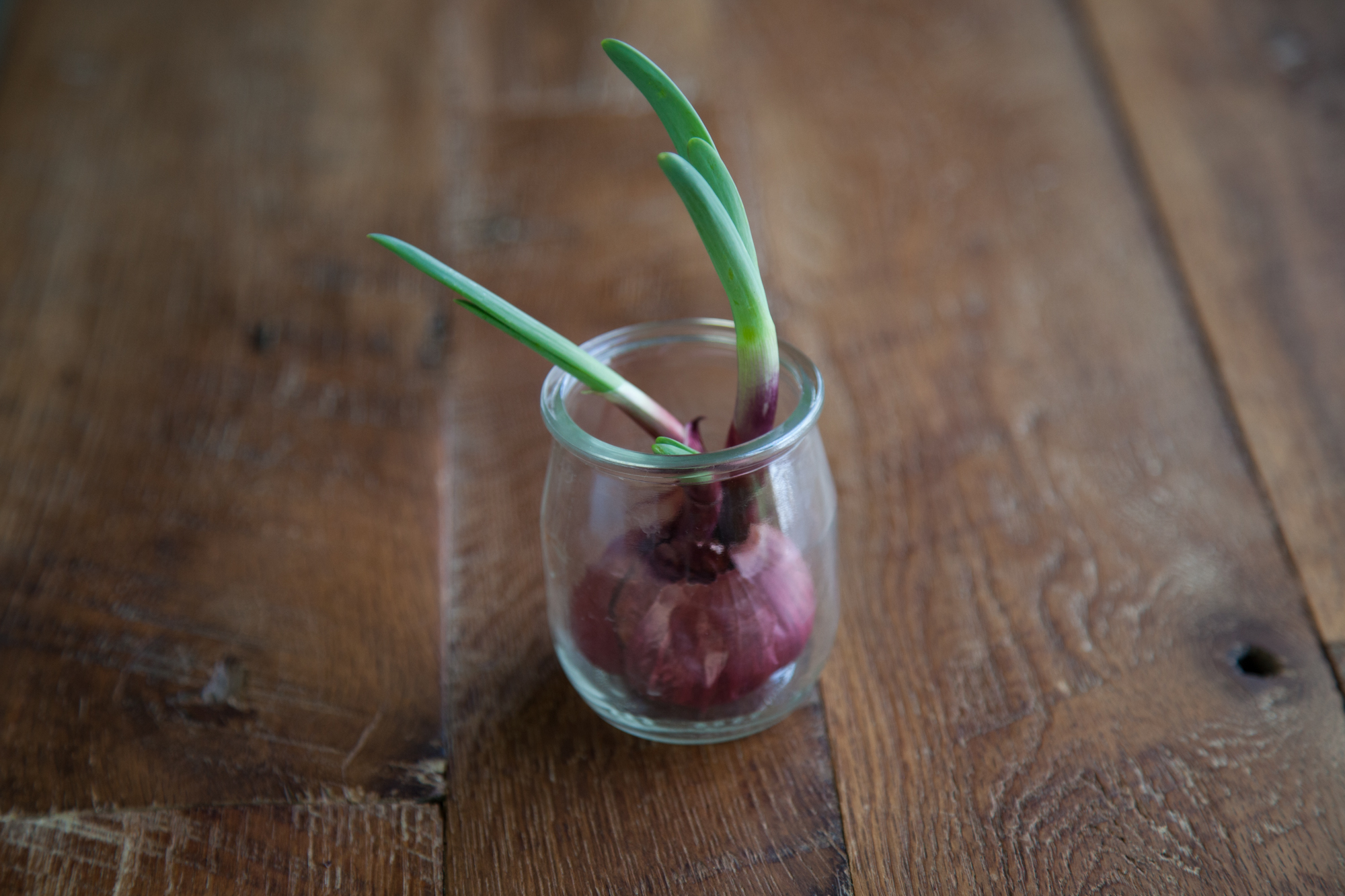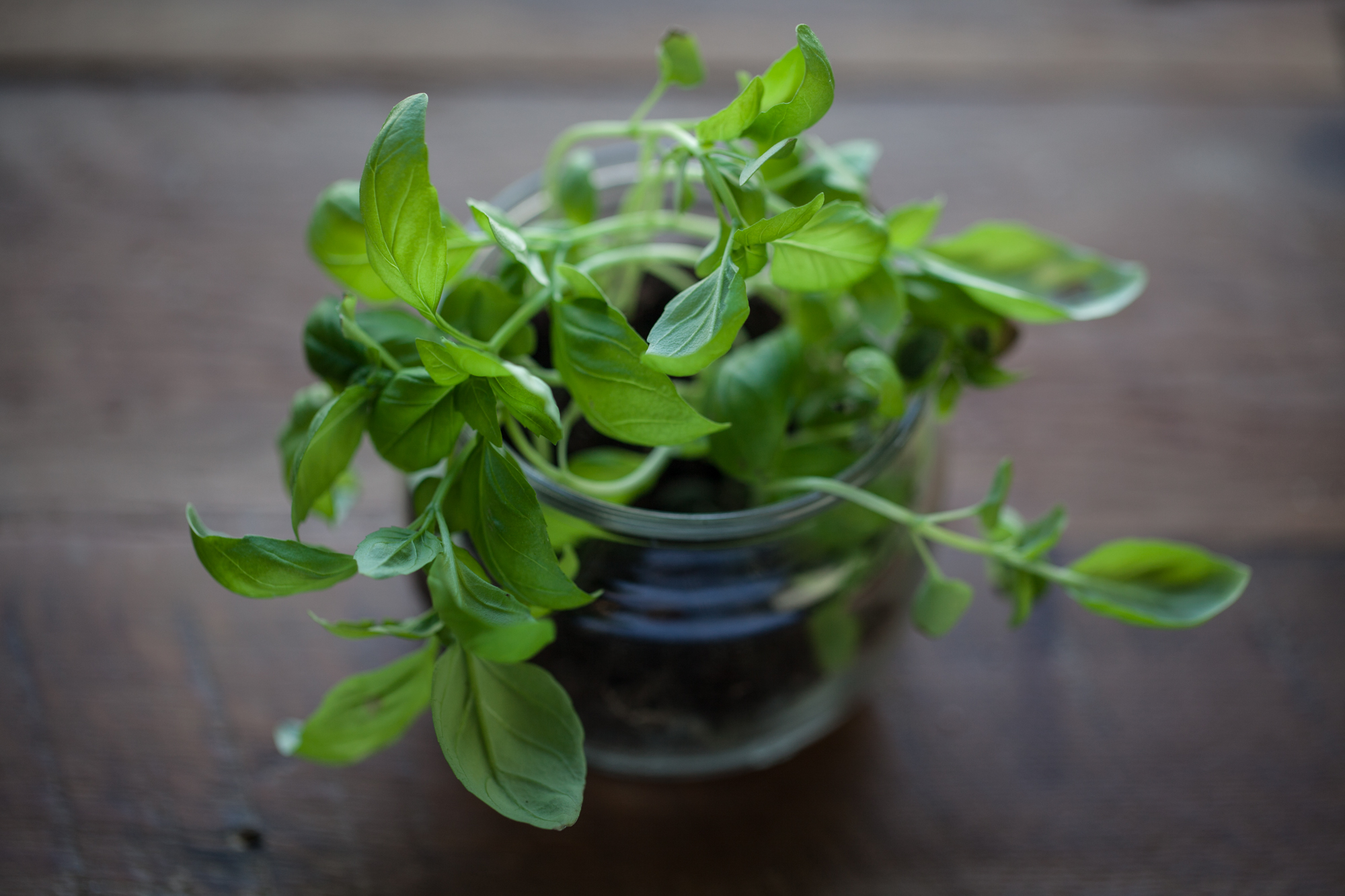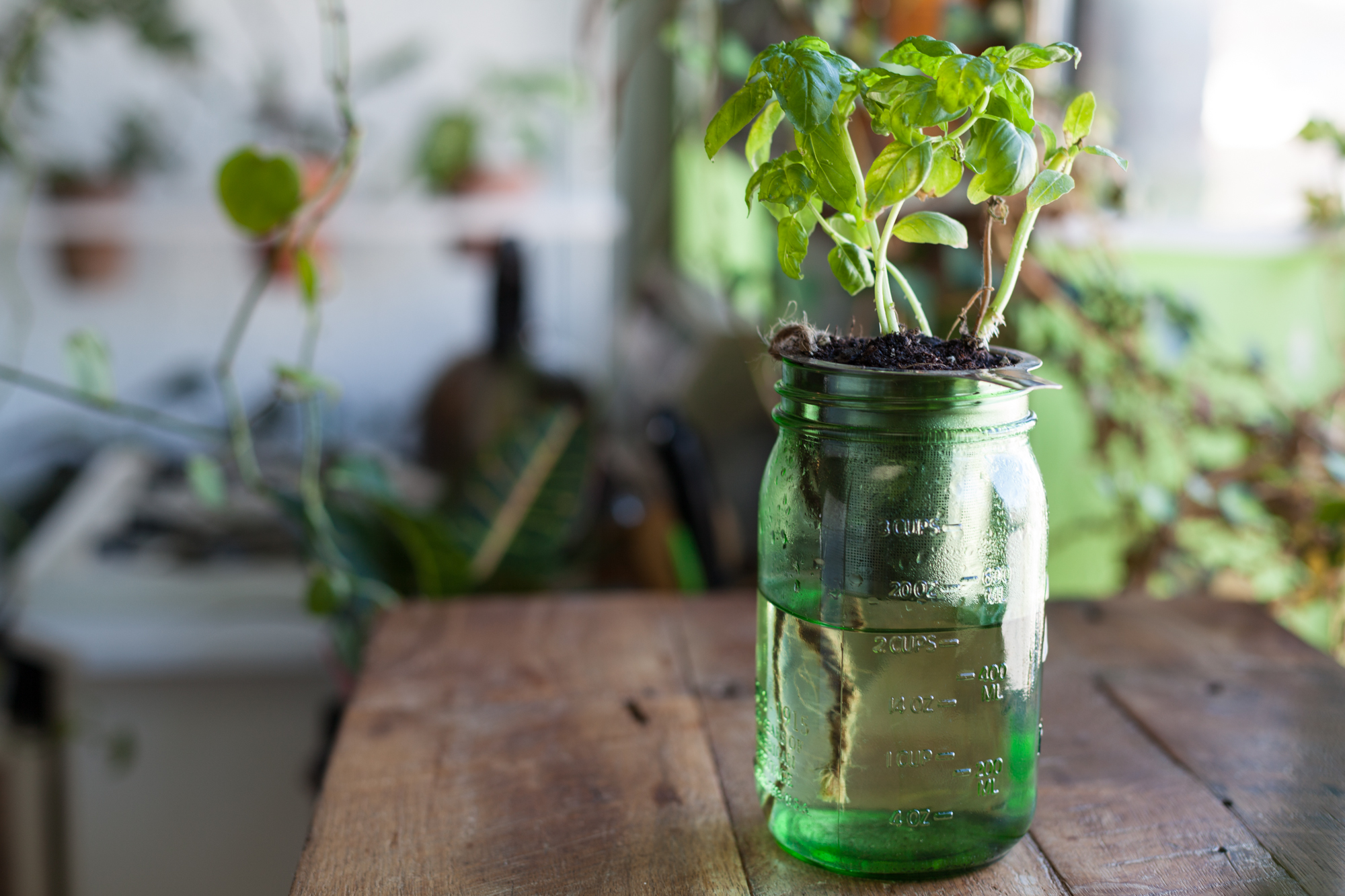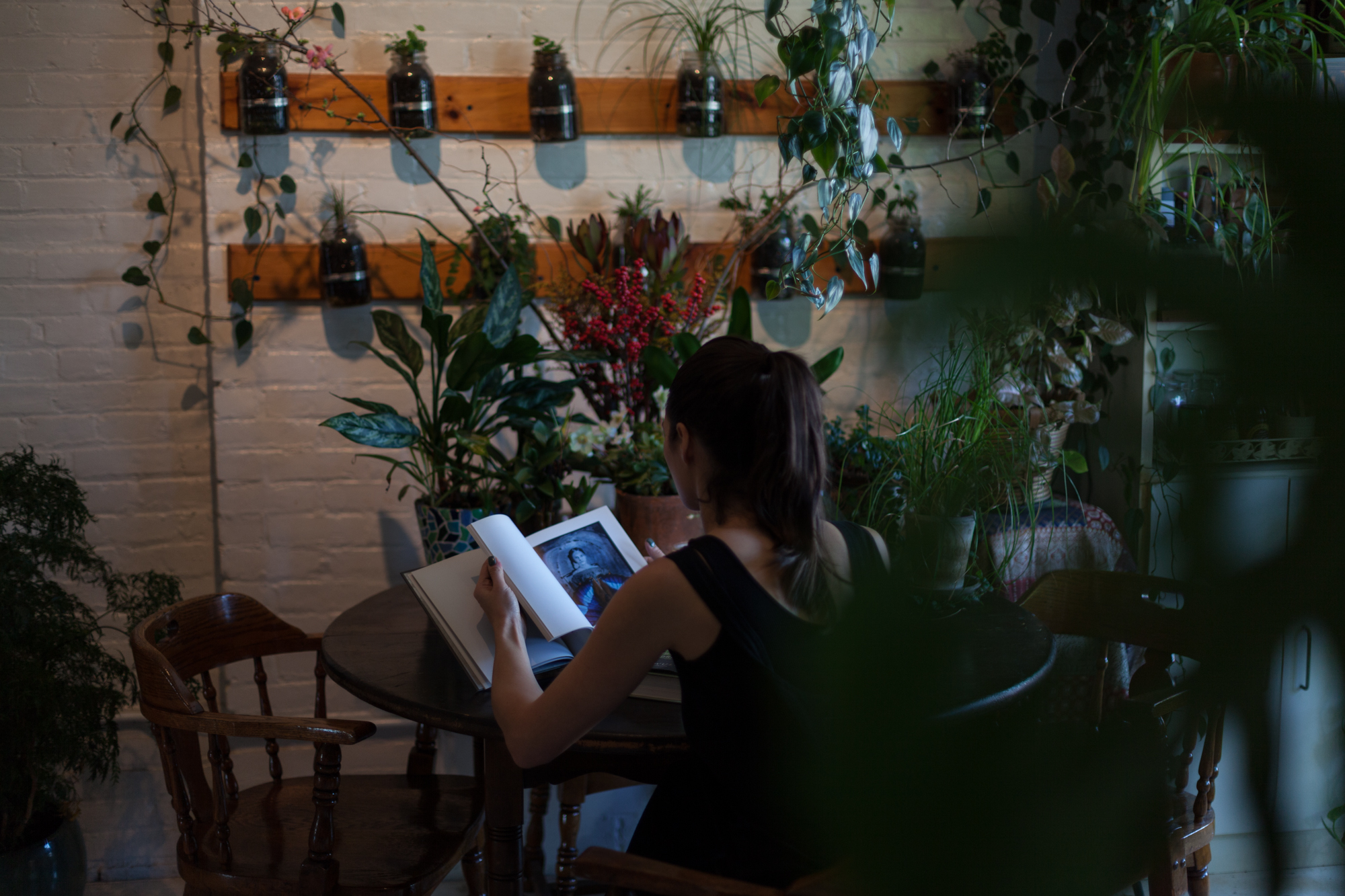Just look to your kitchen for clever ways to create whimsical indoor gardens. Here are seven different ways I’ve upcycled containers to help satisfy my greenthumb at home while employing zero waste techniques.
Coffee or tea canisters. Wine is the typical gift guests bring over to a dinner party, but not being a wine drinker myself, my friend Tara asked what she should bring to my dinner party. I responded, “A potted plant.” Much to my surprise, she came over with a beautiful spider plant in an old coffee canister. I loved the look of it. Being a big tea drinker, I started to convert all my upcycled tea canisters into succulent planters. I didn't even bother drilling holes in the bottom since I'm careful not to overwater my succulents. Of course, I drink way more tea than I acquire plants, so now I'm saving the extra tea canisters and purchasing succulents as needed to give as special housewarming and birthday gifts for friends. (Note: The Republic of Tea and Harney & Sons seem to be the best canisters for planting)
Vintage ceramic cups and bowls. When I'm heading to the park, I sometimes pop into Junk Brooklyn, which is a fairly disorganized bazaar of knick knacks, trinkets, clothing and homeware. I keep my eye out for beautiful ceramics and jars, and have been lucky to nab a number of beautiful ceramics that could double as cacti or succulent planters. I was particularly pleased to have found a creamer and sugar bowl that had original price tags of $49.99 and for which I acquired for $2.99 apiece.
Colander as planter. If you are a home cook and go through a number of herbs or leafy greens, but would prefer them freshly picked, then I encourage you to use metal or ceramic colanders as planters. They look super sharp in the kitchen, and the holes in the colander provide for a natural drainage. All you need to do to water them is put them in your sink and give them a little drenching.
Sprouted onions in yogurt containers. Sometimes your onions and heads of garlic remind you that you need to get back to cooking—but don’t toss the sprouted ones away. Instead take mini yogurt containers—like these ones I got from Argyle Farms—to display the new shoots. They especially look good on a work desk, bathroom, or kitchen table—and no watering is necessary!
Microgreens in yogurt glass. Brendan from Good Water Farms gifted me some beautiful basil microgreens—but WAY more than I could possibly eat, so I took some washed White Moustache yogurt containers and transplanted the microgreens with a prime spot in my kitchen windowsill.
Olive oil canisters. If you like to get those big tins of olive oil—don’t toss them in the recycling bin. Instead, upcycle them by cutting the tops off, wash them out thoroughly and use as planters. I found these beautiful ones in the slideshow at a vintage shop next door and planted some Crotons in, which matched the colors of the tin. If you're worried about rusting and drainage, spray a clear Acrylic on the inside and let air out for 48 hours. Next, drill some holes in the bottom and set on a plate, so water can drain freely.
Plants in a Mason jar. Almost two years ago my dad and I set out to make a Mason jar plant garden to create some “living art” on my kitchen wall. Here are those beauties still flourishing in their glass homes. All you need are some rocks, charcoal, soil, wide-mouth jar and plant—and if you want to hang it up on your wall, then you just need some old wood, hose clamps, staple gun, and something to affix the wood board to the wall with. You can also do a self-watering Mason jar herb planter, simply by using a tea strainer, a Mason jar, and a piece of string or rope. Place the rope in the soil with plant within the tea strainer and let it dangle into the Mason jar below. Fill the Mason jar with water up to the base of the metal tea strainer and the plant will water itself automatically through capillary action. 🌿

